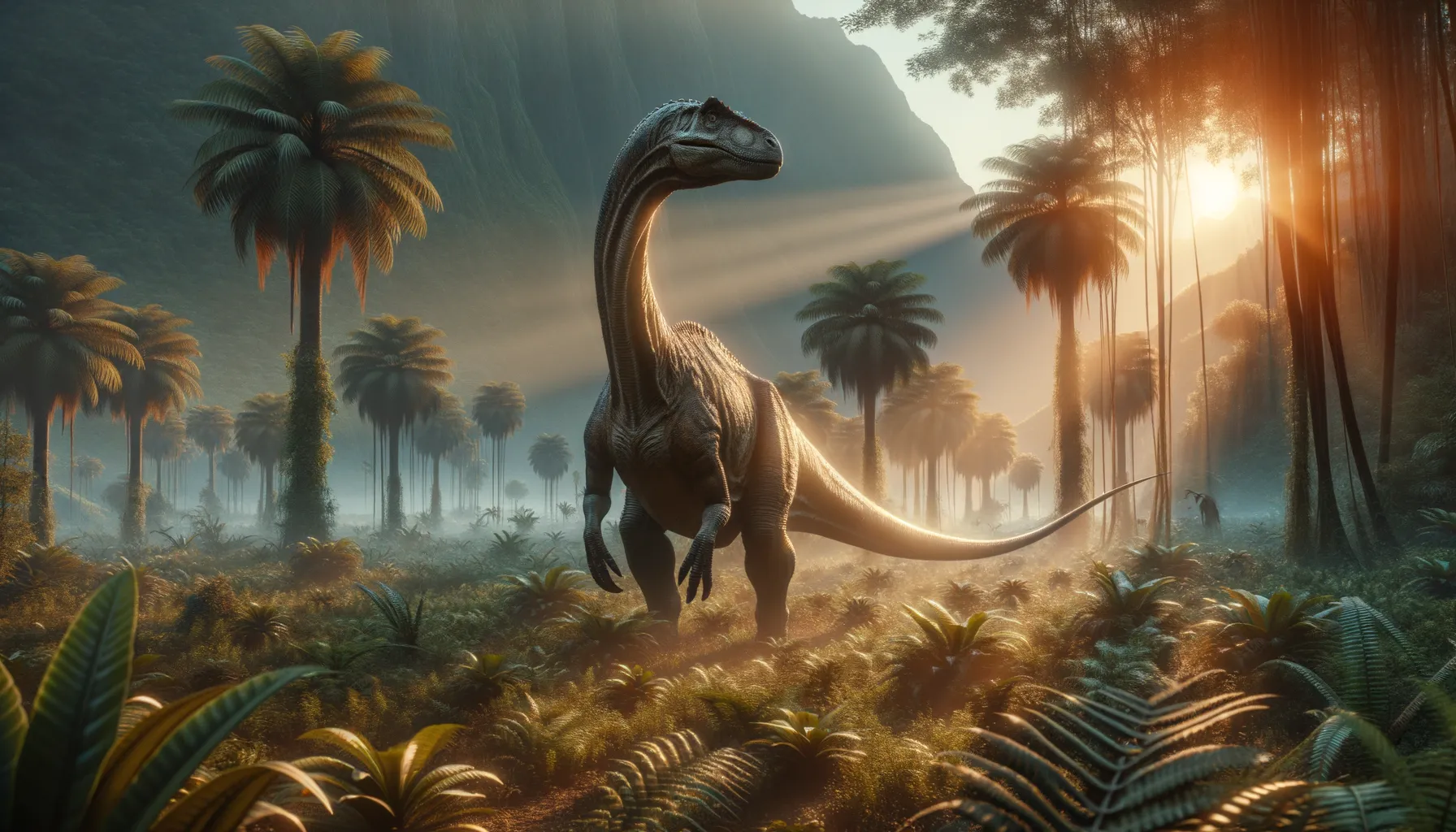
Liubangosaurus
A gentle giant from the Jurassic era.
Period
Jurassic
Length
Around 15 meters long.
Height
Approximately 4 meters tall.
Weight
Estimated to weigh around 5 tons.
Liubangosaurus was a long-necked, plant-eating dinosaur from the Jurassic period. It belonged to the group of sauropods, known for their massive size and long tails and necks. Discovered in China, this species adds valuable information to our understanding of Asia's dinosaur fauna during this era. Its structure hints at adaptations that allowed these giants to thrive in environments where vegetation was abundant, yet required significant adaptations to access efficiently.
Diet
Liubangosaurus was herbivorous, feeding on plants available in its habitat. Its long neck allowed it to reach higher vegetation, likely consuming leaves and soft plant material.
Hunting
As a herbivore, Liubangosaurus did not hunt for prey. Instead, its behavior would have focused on foraging efficiently to meet its dietary needs.
Environmental challenges
Liubangosaurus faced the challenges of maintaining its large body mass, requiring ample food sources in its ecosystem. Climate changes may have impacted plant availability, posing a challenge for survival. The competition with other large herbivores for food resources might have influenced its feeding strategies. Predatory threats from large theropods could have necessitated defensive behaviors or relying on its size for protection.
Speed
Liubangosaurus was not particularly fast, moving at a leisurely pace.
Lifespan
It likely lived for several decades.
First discovery
Discovered in 2010 in the Guangxi region of China.
Fun Facts
- Liubangosaurus is a relatively recently discovered dinosaur, first named and described in 2010.
- It is known from fossil remains found in the Guangxi region of southern China.
- Liubangosaurus was a herbivorous dinosaur, meaning it ate plants.
- The dinosaur lived during the Early Cretaceous period, around 125 million years ago.
- Liubangosaurus belonged to a group called sauropods, which are known for their long necks and tails.
- The name Liubangosaurus means 'Liubang lizard', named after the region where it was found.
- Though its exact size is uncertain, Liubangosaurus was likely smaller than some of its more famous sauropod relatives.
Growth and Development
Liubangosaurus likely experienced slow, steady growth throughout its life. Juveniles would have needed to avoid predation to reach the safety of adulthood. Its development involved growing into its massive size, crucial for its survival and reproduction. As it matured, Liubangosaurus would have developed features enabling efficient foraging and energy conservation.
Habitat
Liubangosaurus inhabited lush environments where plant life was abundant. Forested areas were ideal, providing the food and cover necessary for their massive size. Their habitat would have supported a complex ecosystem with other plant-eating dinosaurs. Water sources close by would have been essential for hydration and possibly breeding sites.
Interaction with other species
Liubangosaurus likely coexisted with other herbivorous dinosaurs, sharing resources and space. It might have encountered large theropods, needing to rely on its size or group behavior to avoid predation. The dinosaur may have formed herds, providing safety in numbers against predators. Competition for food resources with other sauropods and herbivores was inevitable.
Natural lifespan
Liubangosaurus could have lived naturally for several decades.
Reproduction
Liubangosaurus likely laid eggs, as do most sauropods. Nesting sites would have been selected for safety and warmth. Young hatchlings were vulnerable, relying on growth rate and perhaps group care for survival. Breeding behavior would have been critical to ensure continuation of the species.
Social behaviour
Liubangosaurus may have traveled in groups or herds. Such behavior offered protection against predators. Communication within the group could have been crucial for coordination and maintaining social bonds. Group behavior might have facilitated more efficient foraging.
Fossil locations
The primary fossil site for Liubangosaurus is in the Guangxi region of China, providing significant insight into its era. Fossils from the area suggest a diverse ecosystem with various dinosaur species. The discovery of these fossils has contributed to understanding Jurassic biodiversity in Asia. Ongoing excavations in the region may reveal more about its life and interactions.
